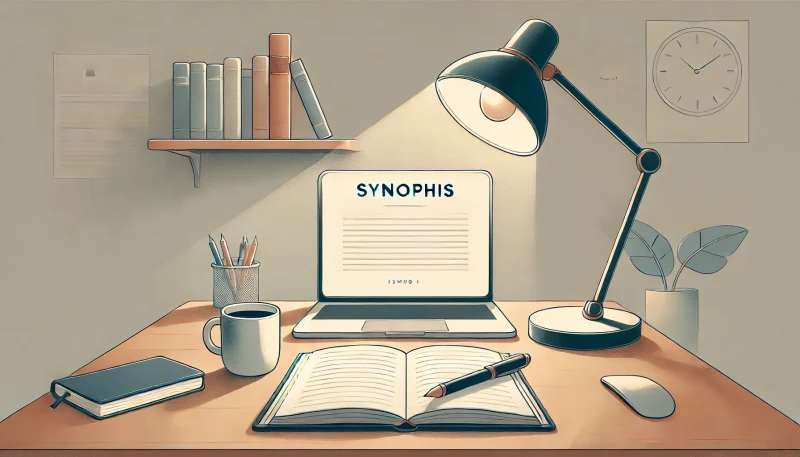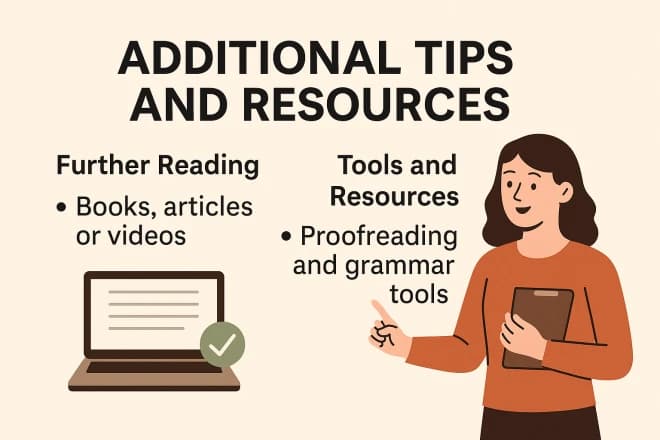Unlock Insights: Find the Answers You Seek on Our Blog
Everything You Need to Know About: How to Write a Synopsis
By Evelyn Sterling
Writing a synopsis can feel like a daunting task, but it doesn’t have to be. A synopsis is a brief summary of your story, book, screenplay, or project. Its purpose is simple: to capture the essence of your work and make others—like publishers, agents, or contest judges—want to know more.
Think of a synopsis as your story’s elevator pitch. It highlights the key plot points, introduces the main characters, and gives just enough detail to intrigue the reader without overwhelming them. Whether you’re submitting to a publisher or entering a writing contest, a strong synopsis is your golden ticket to stand out.
In this guide, we’ll break down the process into easy-to-follow steps. You’ll learn what makes a synopsis effective, the essential elements to include, and tips for avoiding common mistakes. By the end, you’ll feel confident in crafting a compelling synopsis that truly represents your work. Let’s get started!
Understanding the Basics
What is a Synopsis?
A synopsis is a short, clear summary of your story, book, or project. It explains the main plot, introduces the key characters, and highlights important themes. Think of it as a snapshot of your work that shows what it’s about without going into too much detail.
A synopsis is not the same as a summary or a pitch. A summary focuses only on the big picture, while a synopsis gives a little more detail about the characters and events. On the other hand, a pitch is more like an advertisement for your work—it’s meant to grab attention but doesn’t always reveal the full story. A synopsis, however, is designed to tell the full story in a brief, organized way.
Why is it Important?
Your synopsis is often the first thing agents, publishers, or contest judges see. It’s like a first impression—if it’s not clear or engaging, they may lose interest in your work. A good synopsis shows them that your story has a strong structure, compelling characters, and an interesting plot.
For agents and editors, a synopsis is a quick way to decide if your work fits their needs. For evaluators, it helps them understand your story and its potential. Simply put, a great synopsis can open doors and get your work noticed. That’s why it’s worth taking the time to write it well.
Elements of an Effective Synopsis
Key Components to Include
A great synopsis includes the most important parts of your story. Here’s what to focus on:
- Main Plot: Your synopsis should clearly outline the beginning, middle, and end of the story. Start with how the story begins, explain the key events that move the plot forward, and wrap up with how everything is resolved.
- Protagonist(s): Introduce the main character(s) briefly. Share their goals, motivations, or what drives them throughout the story. For example, “Jane, a fearless detective, sets out to solve a mysterious disappearance.”
- Conflict: Every story has a central problem or challenge. Describe what stands in the protagonist’s way, whether it’s an external obstacle or an inner struggle.
- Resolution: End your synopsis by showing how the story concludes. Don’t leave the ending as a mystery—agents and publishers want to see the complete arc.
- Themes: If your story has important themes, like love, survival, or justice, mention them briefly. Themes give depth and meaning to your work.
What to Exclude
A synopsis should be concise, so don’t include unnecessary details:
- Subplots or Excessive Details: Skip side stories or minor events that don’t drive the main plot forward.
- Minor Characters or Irrelevant Scenes: Focus on the key players and moments.
- Personal Opinions or Interpretations: Stick to the facts of the story. Avoid saying things like “This is a thrilling mystery!”—let the story speak for itself.
By focusing on the essentials and avoiding clutter, your synopsis will be clear, engaging, and easy to follow.

Step-by-Step Guide to Writing a Synopsis
1. Start with the Big Picture
Before diving into details, create a one- or two-sentence summary of your work. This should capture the essence of your story—who it’s about, what they want, and how the story resolves.
Example: “This is a story about a young artist who battles self-doubt to create a masterpiece that changes her life.”
This big-picture summary sets the foundation for your synopsis.
2. Break It Down
Next, divide your story into three main parts: the beginning, middle, and end. Write one paragraph for each.
- Beginning: Introduce the protagonist, their world, and the main conflict.
- Middle: Highlight the key events and turning points that drive the story forward.
- End: Show how the conflict is resolved and where the characters end up.
Use active, engaging language to make each section compelling.
3. Focus on Core Characters and Arcs
Stick to the main characters—those who drive the story. Explain their motivations, challenges, and how they grow or change. Avoid mentioning minor characters unless they play a crucial role.
4. Maintain the Right Tone
Your synopsis should reflect the tone of your work. For example:
- A thriller synopsis should feel tense and exciting.
- A romance synopsis should feel emotional and heartfelt.
Match the style to the story’s genre to give the right impression.
5. Edit and Refine
Once you’ve drafted your synopsis, it’s time to polish it.
- Cut unnecessary words or overly descriptive phrases.
- Ensure every sentence is clear and easy to follow.
- Double-check for grammar, spelling, and flow.
By refining your synopsis, you’ll ensure it’s concise, professional, and engaging.
Formatting and Length
Ideal Length
A synopsis should be short and to the point. Typically, aim for 1 to 2 pages, single-spaced, unless the submission guidelines say otherwise. Keep it concise but detailed enough to cover the key elements of your story. If no specific length is mentioned, sticking to this range is a safe choice.
Use Present Tense and Third Person
Always write your synopsis in present tense, even if your story is set in the past. This makes it feel immediate and engaging. For example, instead of saying, “The hero traveled to a distant land,” write, “The hero travels to a distant land.”
Also, use third person, even if your story is written in the first person. For instance, write, “Sarah faces her fears,” instead of, “I faced my fears.” This keeps the tone professional and clear.
Follow Submission Guidelines
Every agent, publisher, or contest may have different requirements for synopses. Before submitting, double-check their guidelines. They may ask for a specific length, formatting (like font or margins), or additional information. Following these instructions shows professionalism and increases your chances of success.
By sticking to these basic formatting rules, your synopsis will look polished and meet industry expectations.
Common Mistakes to Avoid
Being Too Vague or Overly Detailed
Finding the right balance in your synopsis can be tricky. Being too vague leaves the reader confused about what your story is about, while adding too much detail can make the synopsis overwhelming. Focus on the main plot, key characters, and central conflict. Leave out minor events or subplots that don’t directly impact the story’s resolution.
Leaving Out the Ending
One of the biggest mistakes is not including the resolution of your story. Unlike a book blurb, a synopsis is not meant to tease the reader. Agents and publishers need to know how your story ends to understand its full arc. Make sure your synopsis answers questions like: “What happens to the protagonist?” and “How is the conflict resolved?”
Using Flowery or Overly Descriptive Language
A synopsis should be clear and straightforward. Avoid using overly descriptive or poetic language to impress the reader. For example, instead of writing, “The shimmering, moonlit waves whispered secrets of love and loss,” keep it simple: “The protagonist reflects on their heartbreak by the ocean.” Clear language ensures the reader quickly grasps the story’s essence without getting lost in unnecessary details.
By steering clear of these mistakes, your synopsis will be concise, professional, and easy to follow.

Examples of Well-Written Synopses
Fiction Example: Mystery Novel
“Detective Sarah Blake is called to investigate a gruesome murder in a small coastal town. As she uncovers clues, she realizes the victim’s death is connected to a series of unsolved disappearances. Battling the town’s secrets and her own troubled past, Sarah must piece together the truth before the killer strikes again. In the end, she confronts the murderer in a high-stakes showdown, finally bringing justice to the victims and closure to her own demons.”
This synopsis is concise and focuses on the main plot and character arc. It introduces the protagonist, the conflict, and the resolution without diving into unnecessary subplots. The tone matches the mystery genre, creating intrigue and urgency.
Non-Fiction Example: Self-Help Book
“‘Finding Balance’ is a guide to managing stress and improving mental health in a fast-paced world. The book combines practical strategies, personal stories, and expert advice to help readers build healthier habits and find joy in everyday life. From mindfulness exercises to actionable tips on time management, it provides a roadmap for achieving emotional well-being.”
This synopsis clearly outlines what the book is about and who it’s for. It highlights the core themes and benefits for the reader, making it easy to understand why the book is valuable.
Screenwriting Example: Romantic Comedy
“Emma, an ambitious chef, accidentally swaps phones with Jack, a charming but disorganized travel blogger. Through a series of hilarious misunderstandings and texts, they fall for each other without ever meeting in person. When they finally cross paths, they must decide if their virtual chemistry can turn into real love.”
This synopsis captures the playful tone of a romantic comedy. It introduces the main characters, the unique premise, and hints at the resolution. It’s engaging and makes the reader want to know more.
By studying these examples, you can see how a great synopsis captures the heart of a story while remaining concise, clear, and true to the genre.
Tips for Success
Test Your Synopsis with Others
Before finalizing your synopsis, share it with others for feedback. This could be friends, writing peers, or anyone who enjoys reading. Ask them if they understand the story, find it engaging, and if anything feels unclear. Getting an outsider’s perspective can help you spot issues you might have missed, like confusing parts or missing details. Clear feedback will ensure your synopsis is easy for anyone to follow.
Practice Rewriting It
Don’t be afraid to rewrite your synopsis several times. Try phrasing it in different ways to see what works best. Start with a rough draft and refine it with each revision. Focus on making sentences more concise, highlighting the most important points, and removing anything unnecessary. The more you practice, the better your synopsis will become.
By testing your synopsis and refining it through multiple drafts, you’ll create a polished, professional piece that captures your story effectively. Remember, writing a great synopsis takes time, so don’t rush the process!
Conclusion
Writing a great synopsis is all about balance—focusing on the main plot, characters, and resolution while keeping it concise and engaging. Remember to use clear language, follow formatting rules, and avoid common mistakes. Share your draft for feedback and keep refining it until it shines.
Don’t wait! Start drafting your synopsis today. With practice, you’ll master this essential skill.
AI Tools Categories
Browse all AI tools by category
All AI Tools
229Amazon
5AI Writing Generator
85Article & Content Writing
35Branding & Identity
54Content Generation
170Creative Ideas
32Educational Resources
34E-commerce
14Etsy
6Events & Celebrations
13Facebook
6Gaming & Fun
5Instagram
3Lifestyle & Personal
8LinkedIn
6Marketing & SEO
40Poem & Lyrics Writing
19Professional Documents
31Social Media
44Story & Book Writing
49Text Effects
14TikTok
7Twitter
3Writing Enhancement
36YouTube
11
Highly rated and most popular AI tools curated by our experts
Recently added AI tools that are gaining traction
- AI Post Generator

- AI Bullet Point Generator

- AI Discussion Post Generator

- AI 2 Weeks Notice Letter Generator

- AI Content Creation Ideas Generator

- AI Radio Ad Script Generator

- AI Podcast Script Generator

- AI Resume Objective Generator

- AI Resume Headline Generator

- AI Avast Password Generator

- AI Snapchat Caption Generator

- AI Snapchat Username Generator

- AI Pinterest Board Name Generator

- AI LinkedIn Experience Description Generator

- AI Twitter Hashtag Generator

- AI YouTube Short Idea Generator

we prioritize displaying the latest content closely related to the current blog post.







